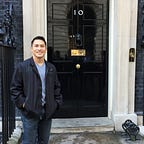How to Take Notes On Books
The most effective method is…
Whatever works for you. Pick one method and stick with it.
Ignore all the other methods. There is not one method that works the best.
Ever read a book and scratch your head because you could not summarize it? It’s annoying isn’t it?
I can read a book and totally forget what it’s about just a week later. It’s one of the most annoying things in the world. It’s annoying because it feels like I’ve wasted time reading it.
First off, let’s set ourselves up for success with some basic tenets of an effective reading program.
Read books worth reading. “So many books, so little time.” (a t-shirt slogan). This is true. There are more books than you have time to read in your life. So pick wisely. If you could read a book a week, that’s 52 books a year. An ambitious goal. Assuming a lifetime of reading is 40 years, that’s just over 2,000 books- a microscopic amount of the total books in existence.
Test the waters. Be super selective of your time and energy. Because time and energy are limited, do not be afraid to ditch books that don’t hold your attention. A book’s purpose is to increase your knowledge base. Once you’ve extracted knowledge from the book, move on. Most books today are a single key message wrapped up in anecdotes that support that message. Once you realize the message, move on to the next book.
Mark your books (if reading actual books). Minimal markings are the most effective for me. I have to balance two things when reading: contextual clues on highlights and speed. Don’t mark books that aren’t yours. This should go without saying.
Note-Taking Procedure
- Read the book as you’d normally read any book. Assuming you’re passed the initial scan, you’ll read from beginning to end.
- Read with writing utensil in hand. Add minimal marks to sections and passages that jump out at you. Be selective with highlights. If everything is highlighted, NOTHING IS HIGHLIGHTED.
- Once you’re done reading, I like to review the marks I’ve made from beginning to end. I create a digital note (I use Obsidian) on my computer. In bullet format, I type all the highlights onto one note. Sometimes when I’m lazy or pressed for time, I use dictation software (Otter) and cut and paste my highlights onto the digital note. This is LEVEL 1 of the distillation process (book → selected highlights). This single note, with all the highlights, is what Sonke Ahrens (How to Take Smart Notes) calls a “Literature Note”. This literature note is an “Interim Note”. You can do one of two things with it: leave it for future reference or expand on certain highlights in separate, but connected, notes.
- Highlights of highlights. Your literature note from the previous step can still be overwhelming. If you’re like me, you’ve got tons of highlights. Review those for passages that jump out at you. Sometimes passages that I’ve highlighted during the initial reading don’t resonate with me later. That’s fine. I just move on to passages that do stand out. On the digital note (literature note), I’ll just highlight passages that stand out. These “highlights of highlights” serve as a point of focus for when my future self rereads the note. My future self is going to read these highlights without much of the context I’ve got today. So I need to take that into consideration- make it easier for myself in the future. This “highlights of highlights” is LEVEL 2 of the distillation process (literature note as a whole → highlights within the note).
- Expression. In the same literature note, there will be ideas that really jump out at me. I’ve found that the only way these new ideas stick is for me to actively engage with them. For me, this means writing about it in a separate note about a single idea. From one literature note with all my initial highlights, 10% of them will require a separate note where I expand on the concept. These are my permanent notes that I can use in other contexts. This step allows me to tack on my ideas to what I’ve extracted from the book.
The bottom line: the only way to internalize a book is to actively engage with it and the concepts in it.
I’ve found no other way. There’s tons of friction with this process, but I’ve found it to be absolutely beneficial.
